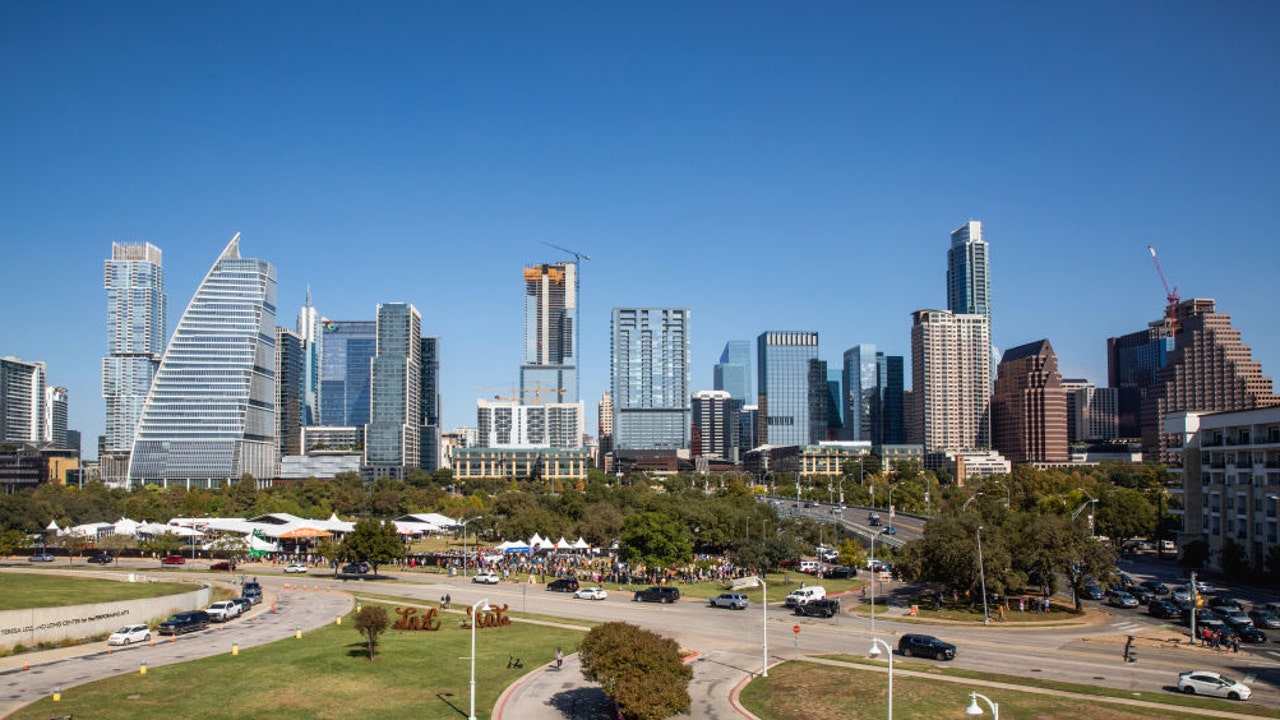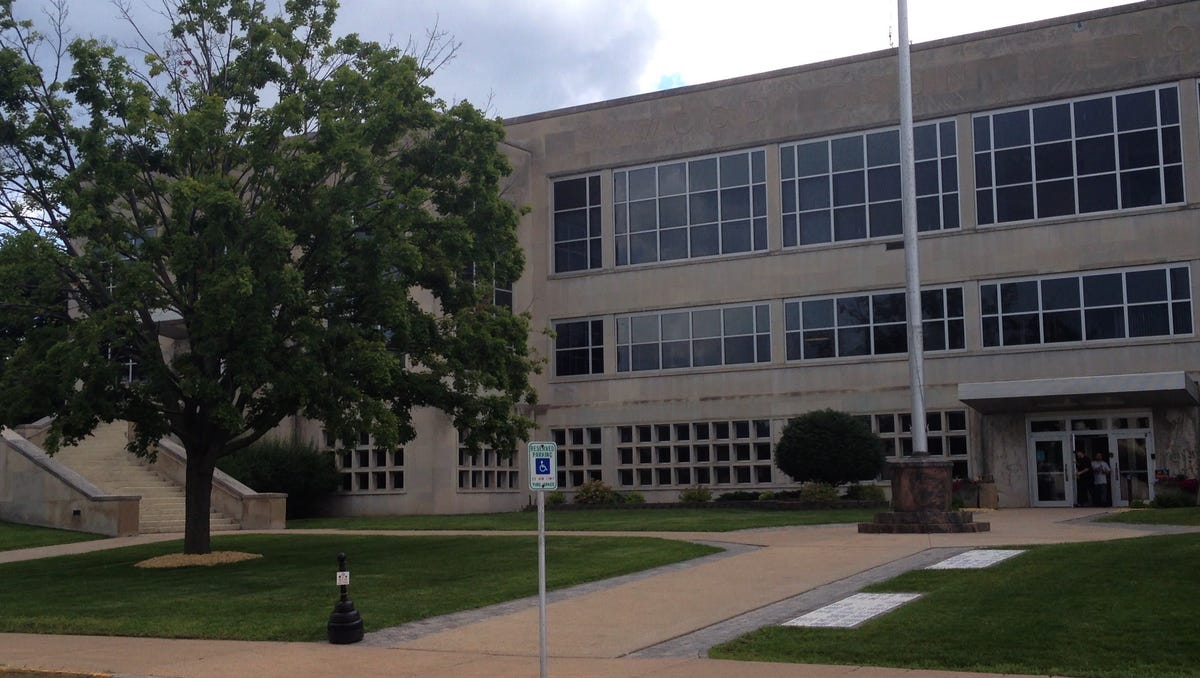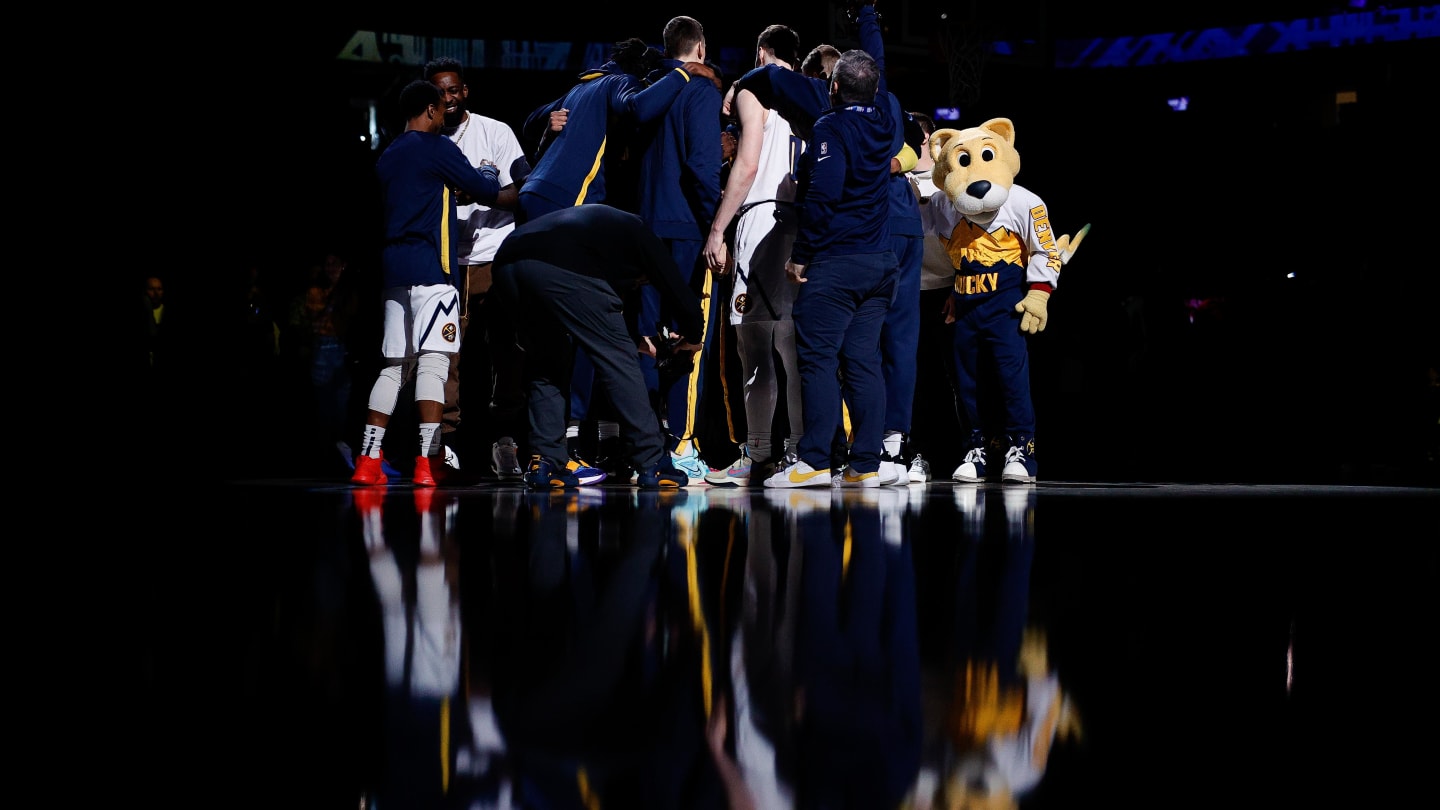Austin, TX
Grants totaling nearly $815,000 awarded to community projects in Austin area and across Texas

AUSTIN, Texas – Nearly $815,000 in grants has been awarded to 34 community projects in towns and cities across Texas by the Lower Colorado River Authority (LCRA).
The awarded Community Development Partnership Program (CDPP) grants will help fund a wide range of projects across LCRA’s wholesale electric, water and transmission service areas, including construction of a new building to house firetrucks and emergency equipment in Coleman County, needed upgrades to a community hall in Weimar and improvements to youth sports facilities throughout the Austin area.
The grants will also help fund improvements at parks, museums and other community spaces and facilities, including improved lighting for a pickleball court in Bastrop, a new pavilion for a park in Blanco and new air conditioning for the old Shiner High School gym.
Almost half of the grants will assist first responders with projects including fire station upgrades and the purchase of specialized firefighting gear and life-saving equipment.
Austin Ed Fund aims to ‘inspire the future’ with grants for local teachers
Inspire the Future Grant Program encourages teacher-led collaborative projects that focus on innovative teaching strategies that enhance learning and support the wellbeing of students, staff, and families.
“These projects add value and vitality to communities by improving public health and safety and boosting economic development,” LCRA General Manager Phil Wilson said. “LCRA is proud to help fund these projects to support communities throughout our service area.”
CDPP grants are awarded twice a year for capital projects improving volunteer fire departments, emergency responders, cities and counties, schools, libraries, civic groups, museums and other tax-exempt non-profit organizations.
To date, LCRA has awarded 1,967 community grants totaling more than $50 million.
Applications for the next round of grants will be accepted during July at lcra.org/cdpp. Applications are due by midnight July 31.
RELATED COVERAGE
Below are the 34 grants awarded in the most recent grant cycle:
Bastrop
- A $25,000 grant from LCRA and Bluebonnet Electric Cooperative to Bastrop County Emergency Services District No. 2 for two new mechanical CPR devices that can administer automated chest compressions to cardiac patients.
- A $25,000 grant from LCRA and the City of Bastrop to Bastrop Little League for automated external defibrillators and upgrades to concession stands and restrooms.
- A $9,730 grant from LCRA and Bluebonnet Electric Cooperative to the Bastrop Area Pickleball Association for new energy-efficient LED lighting at its 10 courts.
Bellville
- A $50,000 grant from LCRA and the City of Bellville to Bellville Little League for a new lighting system.
Blanco
- A $24,000 grant from LCRA and Pedernales Electric Cooperative to Blanco Methodist Church for a community pavilion with restrooms, showers and kitchen space.
Brady
- A $12,713 grant from LCRA to the City of Brady for new playground equipment at Brady Lake, a popular spot for family gatherings.
- A $10,638 grant from LCRA and the City of Brady to the McCulloch County Historical Theater Society for new carpet and tile inside The Palace Theater.
Burton
- A $15,000 grant from LCRA and Bluebonnet Electric Cooperative to St. John’s United Church of Christ for upgrades to a community park, including new playground equipment, a fence and a pavilion.
Carmine
- A $25,000 grant from LCRA and Bluebonnet Electric Cooperative to the City of Carmine for construction of a new concrete plaza and renovations to a flood-damaged pavilion at Muehlbrad-Albers City Park.
Dripping Springs
- A $21,795 grant from LCRA and Pedernales Electric Cooperative to the Rambo Masonic Lodge No. 426 for new energy-efficient windows in its 141-year-old historic building.
Eagle Lake
- A $50,000 grant from LCRA to the Eagle Lake Volunteer Fire Department for the replacement of a leaky roof and new LED lighting at its fire station.
Eula
- A $22,931 grant from LCRA to the Eula Volunteer Fire Department in Callahan County for new protective gear for firefighters and an inflatable rescue bag that can lift more than six tons to free people who are trapped.
Flatonia
- A $13,311 grant from LCRA and the City of Flatonia to the Flatonia Volunteer Fire Department for new fire hoses, valves and adapters.
Florence
- A $24,771 grant from LCRA and Pedernales Electric Cooperative to the Florence Volunteer Fire Department for a mobile crash barrier to protect the public and first responders at the sites of vehicle accidents.
Goldthwaite
- A $25,000 grant from LCRA and the City of Goldthwaite to the Texas Botanical Gardens and Native American Interpretive Center for a rainwater catchment system to irrigate a native plant garden and highlight water-wise landscaping practices.
Grape Creek
- A $24,820 grant from LCRA to the Grape Creek Volunteer Fire Department in Tom Green County for new self-contained breathing equipment, including air packs and masks with microphones to help firefighters communicate better during emergencies.
Johnson City
- A $25,000 grant from LCRA and Pedernales Electric Cooperative to Lights Spectacular for electrical upgrades on the grounds of the Blanco County Courthouse to support the annual Lights Spectacular holiday display and other community events on the courthouse square.
Junction
- A $43,850 grant from LCRA to the Kimble Rural Fire Department for three heat pump units as part of ongoing renovations to the department’s emergency response center, which will eventually house firefighting vehicles and include training space and a dispatch center.
Lakehills
- A $25,000 grant from LCRA and Bandera Electric Cooperative to the Greater Medina Lake Little League in Bandera County for shade structures and new backstop padding at its softball and baseball fields.
Lexington
- A $25,000 grant from LCRA to the City of Lexington for a new downtown digital marquee to share important local messages with community residents.
Lincoln
- A $25,000 grant from LCRA and Bluebonnet Electric Cooperative to the Lincoln Volunteer Fire Department in Lee County for new bunker and wildland firefighting gear.
Matagorda
- A $25,000 grant from LCRA to Matagorda County for two new all-terrain vehicles that will improve beach patrols and emergency response in the coastal county.
Melvin
- A $5,000 grant from LCRA to the City of Melvin to replace 30-year-old carpet in its community center with new vinyl flooring.
Palacios
- A $24,000 grant from LCRA to the Palacios Volunteer Fire Department for new specialized protective gear for firefighters.
Round Top
- A $25,000 grant from LCRA to the James Dick Foundation for the Performing Arts for a new public address system inside a concert hall at the Round Top Festival Institute.
San Saba
- A $5,000 grant from LCRA and the City of San Saba to the San Saba County Historical Museum Foundation for an outdoor exhibit near the museum to illustrate the history and importance of water in the county.
Sandy Harbor
- A $31,300 grant from LCRA and Pedernales Electric Cooperative to the Sandy Harbor Volunteer Fire Department in Llano County for a makeover of its fire hall that will improve accessibility and upgrade windows, lighting and the building’s heating and cooling system.
Sheffield
- A $13,448 grant from LCRA to the Sheffield Volunteer Fire Department in Pecos County for a garage to protect emergency vehicles and the installation of a ductless climate control system for a planned fitness training center.
Shiner
- A $25,000 grant from LCRA and the City of Shiner to the Shiner Academic and Athletic Foundation for a new heating and air-conditioning system in the old Shiner High School gym, which is used by sports teams and other school groups.
Smithville
- A $15,920 grant from LCRA and the City of Smithville to the Smithville Heritage Society for improvements to the 115-year-old building that houses the organization’s historical museum.
Talpa
- A $46,800 grant from LCRA to the Talpa Volunteer Fire Department in Coleman County for a new building that will house two firetrucks and other emergency equipment and provide additional storage space.
Tanglewood
- A $25,000 grant from LCRA and Bluebonnet Electric Cooperative to the Tanglewood Volunteer Fire Department in Lee County for new battery-operated rescue equipment that can help free people trapped in wrecked vehicles.
Weimar
- A $24,924 grant from LCRA and the City of Weimar to the Veterans Memorial Park of Weimar for updates to the electrical system and lighting in the nonprofit organization’s community hall.
Winchell
- A $25,000 grant from LCRA to the Winchell Volunteer Fire Department in Brown County for an expansion of its fire station, which doubles as a community center.

Austin, TX
Celebrate the Fourth of July in Austin at free spectacular with music, food and fireworks

The stars won’t be the only part of the night sky that’s big and bright deep in the heart of Texas on the Fourth of July.
If you’re in Austin, Texas, for the holiday, there’s one party in particular worth checking out: Star Spangled Fest. The annual Fourth of July celebration takes place on Thursday, July 4, at Auditorium Shores, located at 900 W. Riverside Drive, and Vic Mathias Shores, 800 W. Riverside Drive, in Austin.
The patriotic bash is presented by the Austin Symphony Orchestra, which will perform before the Fourth of July fireworks blast off over Lady Bird Lake. While the event is entirely free and open to the public, you can drop some cash to elevate your experience at Star Spangled Fest. But we’ll get into that in a moment.
Whether you’ve never been to the Austin Symphony Orchestra’s Fourth of July bash or it’s been a minute since you last attended, allow us to fill you in on all the good fun the free event offers.
From road closures to event activities, here is everything you need to know about Star Spangled Fest, including VIP options.
When does Star Spangled Fest in Austin start?
The Fourth of July fun for Star Spangled Fest starts at 4 p.m. Thursday, July 4, when both GA (free) and VIP (ticketed) areas will open.
There will be a DJ performance at 5 p.m., followed by performances from Tameca Jones at the VIP stage on the Long Center lawn at 5:45 p.m., Bidi Bidi Banda on the main stage by Lady Bird Lake at 6:30 p.m. and Sundance Head on the main stage at 7:15 p.m. The Fourth of July ceremony will start at 8 p.m. followed by the Austin Symphony Orchestra’s free concert at 8:45 p.m.
The Fourth of July fireworks show over Lady Bird Lake will start around 9:30 p.m. Event organizers recommend attendees get familiar with the festival map before arriving. You can find the map here.
What is there to do at Austin Symphony Orchestra’s Fourth of July fest?
There will be many things to do at Star Spangled Fest before the Austin Symphony Orchestra takes the stage at 8:45 p.m. on Thursday, July 4.
After claiming the perfect spot at Auditorium Shores or near Vic Mathias Shores, you can browse market vendor booths, enjoy some family-friendly activities like yard games, grab some grub from one of several local food trucks that will be on-site and enjoy the views of downtown Austin as various performers take the stage.
Guests also can take pictures with Santa, who will be donning summer attire. Event organizers told LoneStarLive.com that lines for photos will be shortest before 8 p.m. If this is something you want to do, be sure to get there early!
Food trucks that will be at Star Spangled Fest include Garbo’s, Dirty Dough, The Corndog Co., Southside Flying Pizza, Shawarma Point, Amy’s Ice Cream, Casey’s New Orleans Snowballs, Espadas de Brazil and Sweeter Than Sour.
There also will be multiple bars on-site for attendees ages 21 and older. If you’re looking to get a boozy drink from one of the bars at Star Spangled Fest, remember that you must consume the entirety of your alcoholic beverage in the bar areas or designated VIP areas before returning to the general event grounds.
What can I bring to the free concert and fireworks show in Austin?
Attendees can bring chairs, blankets, snacks and nonalcoholic drinks in coolers. Guests are not supposed to bring outside alcohol to the event, either. If you feel like being a risk-taker and breaking the rules, that’s entirely up to you.
Glass, grills and personal fireworks — including sparklers — are not allowed at the event. According to the official website, coolers and outside food and beverages are not permitted in VIP areas (including shoreline access) at Star Spangled Fest.
What are the different VIP options, plus the cost?
If you’d like to elevate your Fourth of July experience at the event, you have a few options. Though the event is free and open to the public, there are three types of upgrades attendees can purchase:
- Shoreline access
- VIP lawn access
- VIP reserved tables
Here is what’s included with shoreline access tickets
Shoreline access allows ticket holders to get closer to the stage where the symphony will be playing its free concert and thus closer to Vic Mathias Shores, where the fireworks show will be. These tickets also include access to air-conditioned bathrooms, private access to a cashless bar and prime proximity to food trucks.
Shoreline access tickets start at $35, plus fees. Ticket holders can bring chairs and blankets.
Here is what’s included with VIP lawn access tickets
VIP lawn access grants ticket holders the ability to set up in the VIP lawn area near the Long Center, 701 W. Riverside Drive, but that’s not all. Those with VIP lawn access tickets also will be able to enter the lobby of the Long Center, premium viewing of the VIP stage that’s located on the Long Center’s hillside lawn, access to air-conditioned bathrooms, lawn games and access to a private bar.
VIP lawn access tickets start at $75, plus fees. Children 10 and younger get in free.
Here is what’s included with VIP reserved tables
VIP reserved tables offer attendees a top-tier Fourth of July experience. These tickets include 10 seats at a designated VIP table, family style dinner at each table, a private bar that’s cashless, access to the Long Center’s lobby and air-conditioned bathrooms, access to the Shoreline viewing area at Vic Mathias Shores, where the fireworks show will take place, access to the VIP after party and a VIP parking pass.
You can get tickets for an entire VIP reserved table for $2,500, plus fees. Or you can reserve half of a VIP table (five seats) for $1,250, plus fees. Payments for VIP reserved tables will serve as donations to the Austin Symphony Orchestra.
You can purchase VIP tickets, including shoreline access tickets, here.
Where can I park for the Fourth of July fireworks in downtown Austin?
Road closures for Star Spangled Fest might impact how you access the event. West Riverside Drive between Lee Barton Drive and South First Street will be closed from 9 a.m. to 10:30 p.m. on Thursday, July 4.
South First Street will be closed from Cesar Chavez Street to Barton Springs Road from 8 p.m. to 10:30 p.m. Thursday, July 4. South Congress Avenue will be closed from Cesar Chavez Street to Barton Springs Road from 8 p.m. to 10:30 p.m., too.
The stress-free way to go, according to event organizers, is taking a rideshare or a cab to the event. Rideshare pickup and drop off will be located at the intersection of Lee Barton Road and West Riverside Drive.
Given the numerous closures, your best bet for parking will be in one of the several parking garages in downtown Austin, along Barton Springs Road and at the Long Center. Street parking will be available, too, but make sure to check signs as some street parking will be blocked off.
As a reminder, you cannot park on most streets in the Bouldin Creek neighborhood. There will be no parking signs and signs indicating residential permit parking only. If you find a spot in a nearby neighborhood, ensure you’re good to go by looking for no parking signs before leaving your car and heading to the event.
You can find road closure maps and specific parking garage information here.
Austin, TX
Misuse of Texas Troopers Has Broader Implications for the US

While the pro-Palestinian student protests and accounts of police crackdowns at universities across the United States in April have fallen out of the newscycle, students at the University of Texas at Austin continue to face criminal charges and other punishment after Texas Governor Greg Abbott deployed the same police used to harm migrants at the US-Mexico border. The misuse of police against student and faculty protesters in Texas was perhaps the mostegregious example from across the nation.
It is also a reminder that unchecked abuses carried out at the border often foreshadow abuses of people living in the US interior. And like the students, migrants also continue to pay a high price for exercising their rights in Texas.
The Columbia University encampment of solidarity with the Palestinian people sparked a wave of student solidarity encampments across the nation, including at UT Austin. Student leaders said they objected to the “Israel-led, US-backed genocide in Gaza” and called for an immediate ceasefire as “Israel continues to bomb hospitals, schools, homes, and refugee camps while cutting off food and water to more than 2 million Palestinians in Gaza.” The protesters demanded UT Austin divest from Israeli companies they say are complicit in killing Palestinians.
While university administrators in some states called local police to break up protest encampments, on April 24, Abbott also deployed the Texas Department of Public Safety – the same heavily militarized state troopers used against asylum seekers and border residents under Operation Lone Star.
Abbott’s multibillion-dollar Operation Lone Star has violated the rights of migrants and Texans alike and is enforced primarily by troopers, who have been involved in injuries and deaths under the program, including at least 74 deaths from high-speed vehicle chases. Operation Lone Star has also included attacks on freedom of association and expression of groups providing support to migrants in Texas.
On June 15, Abbott renewed the “disaster proclamation concerning border security,” first issued in 2021 and triggering the deployment of thousands of state troopers to the Texas-Mexico border to arrest migrants on state charges, including criminal trespass. Abbott’s perpetuation of the invasion and disaster narratives are false and risk fueling white nationalist violence.
The deployment of state troopers to disperse the peaceful protest and arrest students and faculty is just one manifestation of the growing misuse of police in Texas, demonstrating mission creep of the troubled Operation Lone Star. Under the program, the Department of Public Safety regularly carries out air and digital surveillance, racial profiling, unlawful arrests, and deadly high-speed chases; deaths and injurieshave also resulted from its use of razor wire and buoys with saw blades.
On June 13, Human Rights Watch filed a complaint with the Department of Justice Civil Rights Division calling for a swift investigation into allegations of abuse under Operation Lone Star, including asylum pushbacks and the beating of one migrant man to death.
At both the border and at UT Austin, Abbott’s use of state troopers represents a worrying expansion of state control of public spaces at the expense of rights and democracy.
Abbott deployed troopers with the explicit goal of arresting protesters, making sweeping statements that the protesters “belong in jail” and “should be expelled.” Instead of respecting students’ rights to assemble peacefully and to freedom of expression, law enforcement arrived 20 minutes before the protest even started and moved to disperse it less than an hour after it began, based on university officials’ belief that protesters “intended to break… rules,” and not in response to clear evidence of imminent violence or sustained disruption.
At least two Texas troopers escalated the risk of violence by carrying military assault rifles, a needlessly intimidating move that could chill free expression and peaceful assembly. During the first day of protests, dozens of officers in riot gear marched toward the protesters. Mounted troopers pushed into hundreds of protesters, injuring a few, while some troopers shouted, “the horses will hurt you,” according to a report by the Austin-American Statesman.
Over two days, police and the troopers arrested over 100 people, many on trespass charges that have since been dismissed. Though state troopers were not the booking agency for more than a couple of arrests, Human Rights Watch witnessed the officers grabbing and restraining people and assisting in arrests.
The US-Mexico border has long served as a laboratory for state oppression and surveillance, and the events unfolding in Texas echo the trajectory of the US Border Patrol.
After decades of unchecked abuse of migrants and border residents, including racial profiling and deadly high speed chases, the US government deployed Border Patrol officers in 2020 to US cities to quell protests sparked by police violence against Black people. US residents were surveilled, and, at the funeral of George Floyd, 66 paramilitary agents from Border Patrol, including six snipers, were authorized to use both gas munitions and “deadly force” against mourners under certain conditions.
People and officials in Texas and across the US should become more invested in stopping abuses wherever they begin–in this case, at the border. That means acting immediately to hold the Department of Public Safety and other agencies, as well as political leaders who deploy them like Governor Abbott, accountable for abuses. Otherwise, people across the nation stand to pay the price.
Austin, TX
Homeless man who terrorized south Austin neighborhood escapes custody

Austin homeless man escapes custody
A homeless man known for terrorizing a South Austin neighborhood is back on the streets after escaping custody.
AUSTIN, Texas – A homeless man known for terrorizing a South Austin neighborhood is back on the streets.
Austin police said Rami Zawaideh escaped custody, and has a warrant out for his arrest.
Back in April, city officials confirmed Zawaideh was voluntarily committed to a hospital.
Homeless man Rami Zawaideh gets help
A homeless man who has terrorized a neighborhood in South Austin for years is finally getting help. Meredith Aldis has the details.
MORE STORIES:
Since 2022, residents have spotted him smashing city property with sledgehammers, toting around a chainsaw, cutting down trees, and screaming in the early morning hours.
Zawaideh has been arrested before and charged with criminal mischief. But, the district attorney dropped those charges.
FOX 7 Austin recently spoke to Zawaideh’s mother, who drove down from New York to Austin. She said she was in the process of filing an order of protective custody, and intended to take him home with her.
If anyone has any information on his whereabouts, call Austin police.
-

 News1 week ago
News1 week agoRead the Ruling by the Virginia Court of Appeals
-

 News1 week ago
News1 week agoTracking a Single Day at the National Domestic Violence Hotline
-

 Fitness1 week ago
Fitness1 week agoWhat's the Least Amount of Exercise I Can Get Away With?
-

 News1 week ago
News1 week agoSupreme Court upholds law barring domestic abusers from owning guns in major Second Amendment ruling | CNN Politics
-

 Politics1 week ago
Politics1 week agoTrump classified docs judge to weigh alleged 'unlawful' appointment of Special Counsel Jack Smith
-

 Politics1 week ago
Politics1 week agoSupreme Court upholds federal gun ban for those under domestic violence restraining orders
-

 Politics1 week ago
Politics1 week agoNewsom seeks to restrict students' cellphone use in schools: 'Harming the mental health of our youth'
-

 Politics1 week ago
Politics1 week agoTrump VP hopeful proves he can tap into billionaire GOP donors


















